PortÓptimo
Get to know Portugal through the eyes of a young American graduate student studying at the University of Porto. Bem-vindo!
Monday, September 5, 2011
Running and old ladies.
One day after this thesis is over I will write about it more.
Tuesday, July 19, 2011
Pastéis de Belém
There is a special pastel de nata that can only be found in Lisbon, specifically in the Belém (Bethlehem) area, near the Jerónimos Monastery (Mosteiro de Jerónimos) and the Belém Tower (Torre de Belém). It is called the Pastel de Belém and it has been made according to an old convent recipe in the same bakery (of the same name) since 1837.
There is usually a line wrapping around the front of the building to buy these tartlets, but you won't regret waiting for them. They are sold warm and in cute little boxes of 6, although you can of course buy them in any amount, starting at 0.95 Euro each. Not cheap, but worth a try, if only just to say that you did.
Tuesday, July 12, 2011
Palácio do Buçaco (Bussaco)
 |
| The main tower topped by a Manueline orb. |
It is surrounded by beautiful and well-kept gardens and also a so-called "Via Sacra", based on the Roman Via Sacra that was a path that wound up a hill past several religious sites, as that is what this path does. The path passes by depictions of Christ as he is crucified, and there are various points where there are "miradouros" (scenic points) where one can look out across the beautiful landscape. If you climb high enough on the path, you can even see the ocean in the distance.
 |
| The Buçaco Palace in the middle of the Mata (forest) do Buçaco, in the municipality of Mealhada. It looks like something out of a fairytale. |
 |
| The shiny strip in the horizon is the Atlantic Ocean. |
The area was originally occupied by a Carmelite monastery, where in fact the Duke of Wellington, when he was still a Viscount, spent the night. Later, the Palace was built as a hunting retreat of the last two kings of Portugal, Dom Carlos I and Dom Manuel II.
 | ||
| The Duke of Wellington stayed in this small monastery in September of 1810 after defeating Napoleon's troops in the Battle of Buçaco. |
 |
| Neo-Manueline style can be seen behind me. Notice the ropey designs in the columns. |
Now, the palace is a five-star hotel called the Palácio Hotel do Buçaco. It houses a wonderful restaurant which offers a dinner menu (the "full" menu offers an appetizer, fish course, meat course and dessert, and the "simple" menu offers the same minus either the fish or the meat course) for between 40-50 Euro per person. It is a splurge, but the food is wonderful. They have a house wine that is also nice.
 |
| More Neo-Manueline architecture. This was taken from inside of the Palace. |
 | |
| There are various ponds and fountains in the gardens surrounding the Palace. This one housed a solitary swan. I felt bad for him and wished he had a mate. |
 |
| Entry to the Palace. |
 |
| Beautiful. |
Thursday, May 5, 2011
Coimbra
Coimbra is one of my absolute favorite Portuguese cities. It houses Portugal's oldest and one of Europe's oldest universities, the Universidade de Coimbra, around which the city has grown. The fact that the university has long been the lifeline of the city (it was founded in the year 1290) is visible in the vibrant student culture and the general feeling of intellectual superiority that the city breathes. The Coimbra accent (or lack thereof) is considered by many to be the most beautiful in the country, and the downtown (baixa) area is a mess of old, charming maze-like streets that beg for you to get lost in them.
Coimbra is an old city that has passed from the hands of the Romans to the Arabs to the Kingdom of León until it was finally claimed for Portugal. After Dom Afonso Henriques, the first king of Portugal, declared Portugal's independence, he moved the capital of Portugal from Guimarães to Coimbra, and it stayed the capital until 1255 when it was moved to its current location (Lisbon).
That first king and his son, Dom Sancho I, are buried in Coimbra in the Igreja de Santa Cruz. You can see their tombs for an entry fee of 3 Euro or 1.50 Euro for students and +65.
If you visit Coimbra at the start of the school year you can see the students celebrating Latada, which is a week-long party welcoming (and often hazing, or praxe) new students, and if you visit during May you can see a similar week-long party called Queima, which celebrates the graduation of the seniors. Both involve lots of drinking. Lots and lots. But there are also numerous other traditional practices that also take place, that maybe an outsider might be lucky enough to see if he is in the right place at the right time.
Sé Velha, the old cathedral. Coimbra is unique in that it has two cathedrals.
Sé Velha. Construction of the old cathedral began in 1139, shortly after Portugal declared independence.
Interior of Sé Velha.
Sé Nova, the new cathedral. It is huge and very new-looking inside. It was built in 1598 by the Jesuits.
A big bear by the Mondego River!
Two Repúblicas, or Republics, which are essentially Portuguese fraternities. They began in Coimbra, which has by far the most Repúblicas, but Lisbon now also has a few and there is one in Porto. They have funny names, like the ones pictured above, such as "Republic of the Ghosts" and "Royal Republic of Rás-Te-parta" (which, in my understanding, is a joke on the phrase "raios te parta", literally meaning "may lighting bolts split you" which is basically a way to say "go to hell").
An arch in the old city wall.
Some student art and motorcycles.
Igreja de Santa Cruz.
The cloister of the Igreja de Santa Cruz.
Interior of the Igreja de Santa Cruz.
The tomb of Dom Afonso Henriques, the first king of Portugal, in the Igreja de Santa Cruz.
Monday, May 2, 2011
Santarém
A view of the Tagus River from the Porta do Sol ("door of the sun"), now a garden surrounded by some of the old city walls (Muralhas da cidade) and which marks one of the seven entrances to the medieval castle.
The garden of the Porta do Sol.
Igreja de São João de Alporão (Church of Saint John of Alporão). Built in the 7th century.
A quiet city street in the city center of Santarém. I visited on a Sunday so practically nothing was open. Normally this is a busy commercial area.
The beautiful Igreja de Nossa Senhora da Conceição do Colégio dos Jesuítas (Church of Our Lady of the Conception of the College of the Jesuits), built in the 17th century.
Igreja da Misericórdia de Santarém, built in the middle of the 16th century.
Door of the Igreja de Santa Maria de Marvila, believed to have been built over the site of an old Islamic mosque before the 12th century. It has had much architectural intervention over the course of history, the latest in the middle of the 20th century.
I didn't get a chance to go to any restaurants in Santarém, but there was a nice-looking place at inside the Porta do Sol garden.
Thursday, January 20, 2011
Ponte de Lima
According to Wikipedia, Ponte de Lima has a population of only 2,800, although the municipality of Ponte de Lima has more than 44,000 inhabitants. It is located far in the north of Portugal, towards the west, and close to the northern border with Spain.
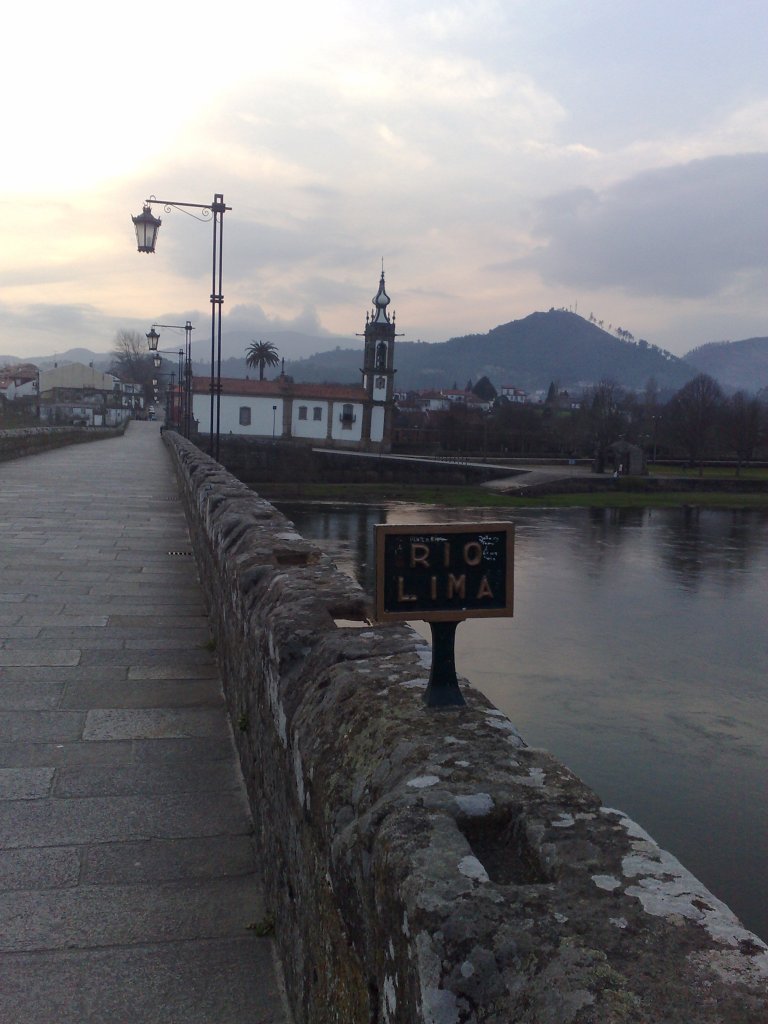
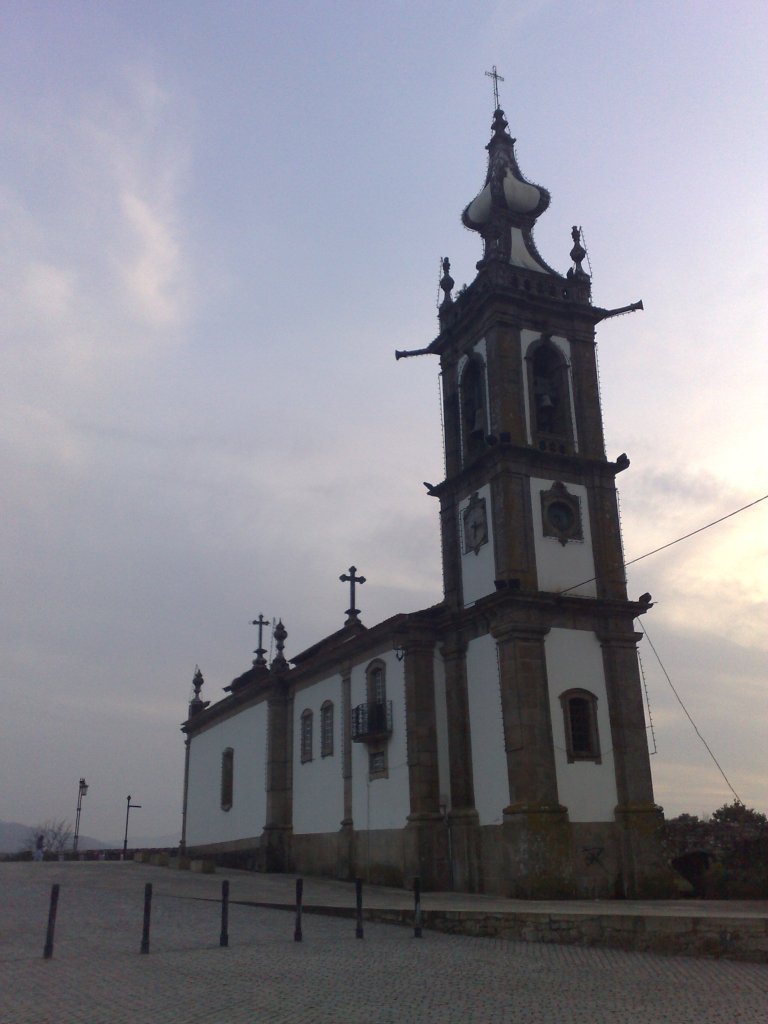
A view of the town of Ponte de Lima as I walked back across the bridge after visiting the church.
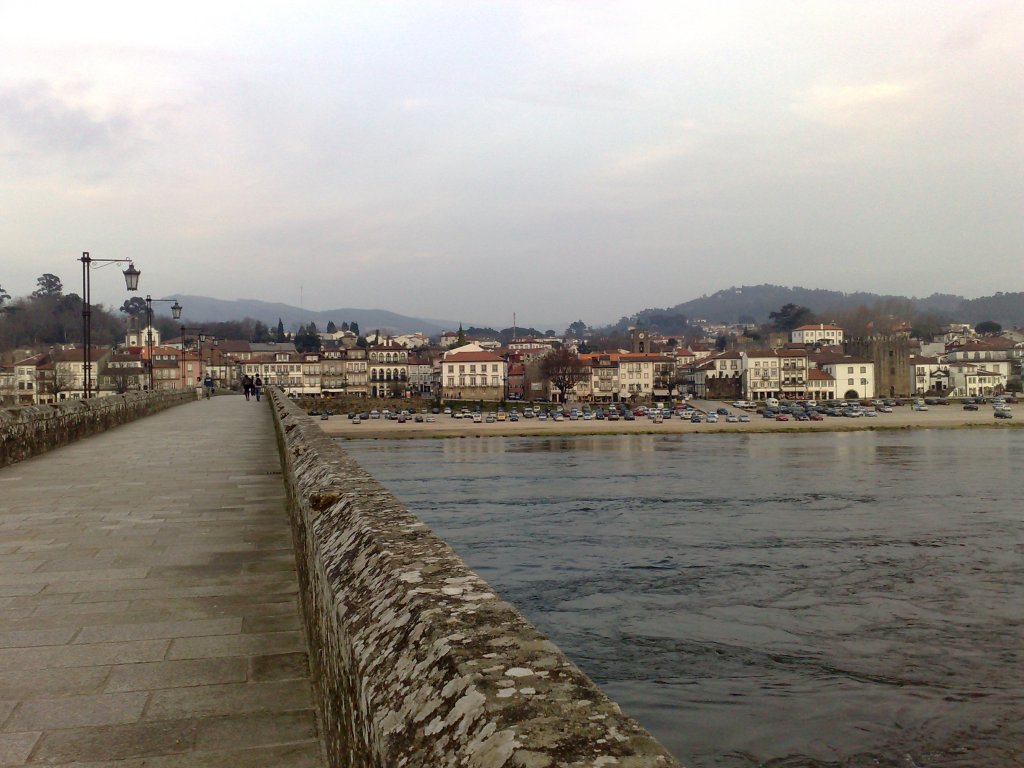
In the main plaza in Ponte de Lima.
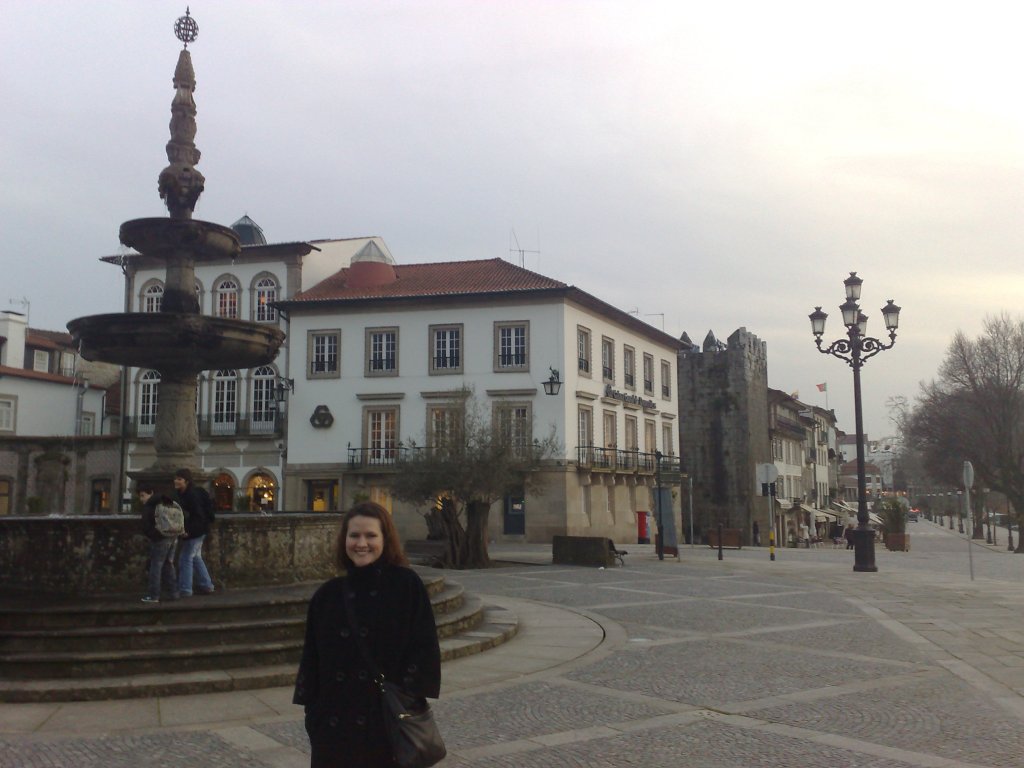
Monte da Penha (Guimarães) in winter
Guimarães is, in my opinion, one of Portugal's most beautiful cities, but today I am going to post pictures not of Guimarães, but of the Penha mountain that overlooks it. These pictures were taken around January of 2010, when there was an unusual amount of snow on the mountain top (it had even snowed in Oporto that month!).
Personally, I love, love, LOVE Penha. I think that it is a very magical and spiritual place. I highly recommend visiting if you are lucky enough to have the chance.
O Monte da Penha, towering over the city of Guimaraes. You can already see the snow on top!
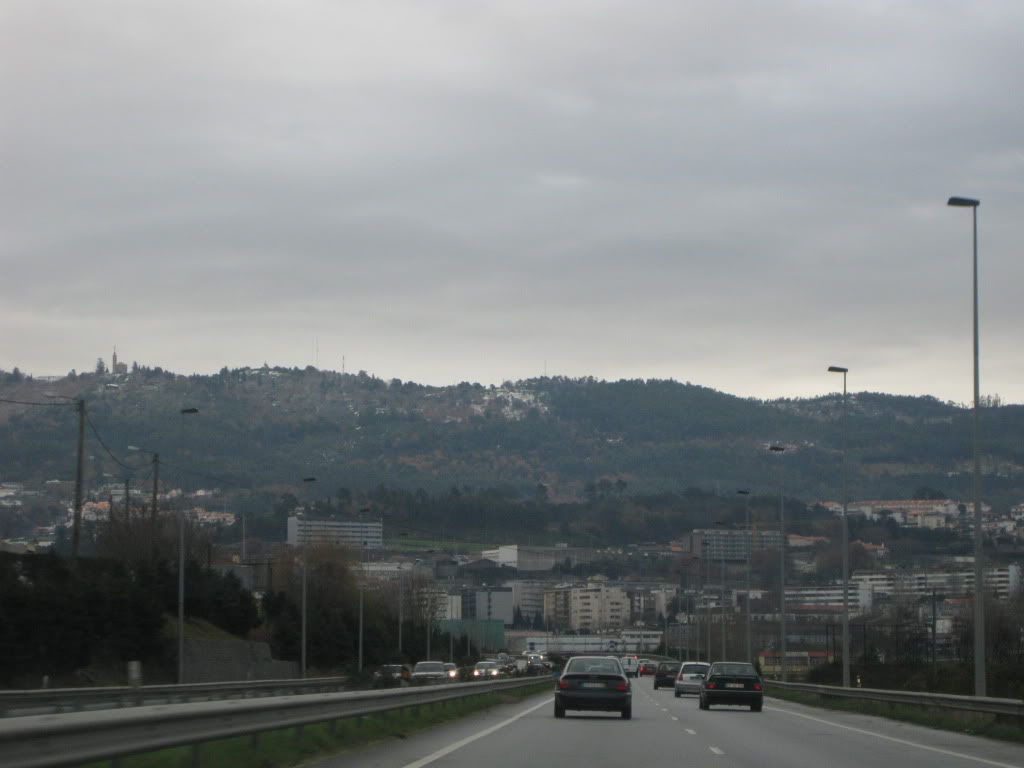
The hotel that sits at the top of the Penha mountain is on the right. It has stunning views of the city below!
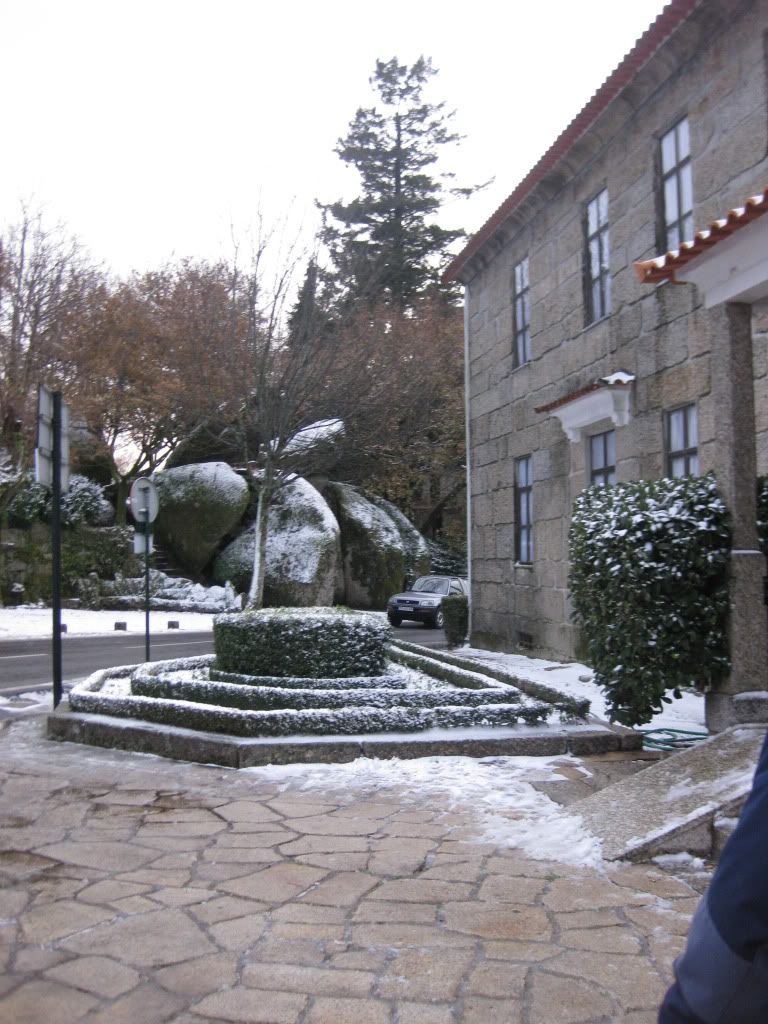
The church that sits atop the Monte da Penha.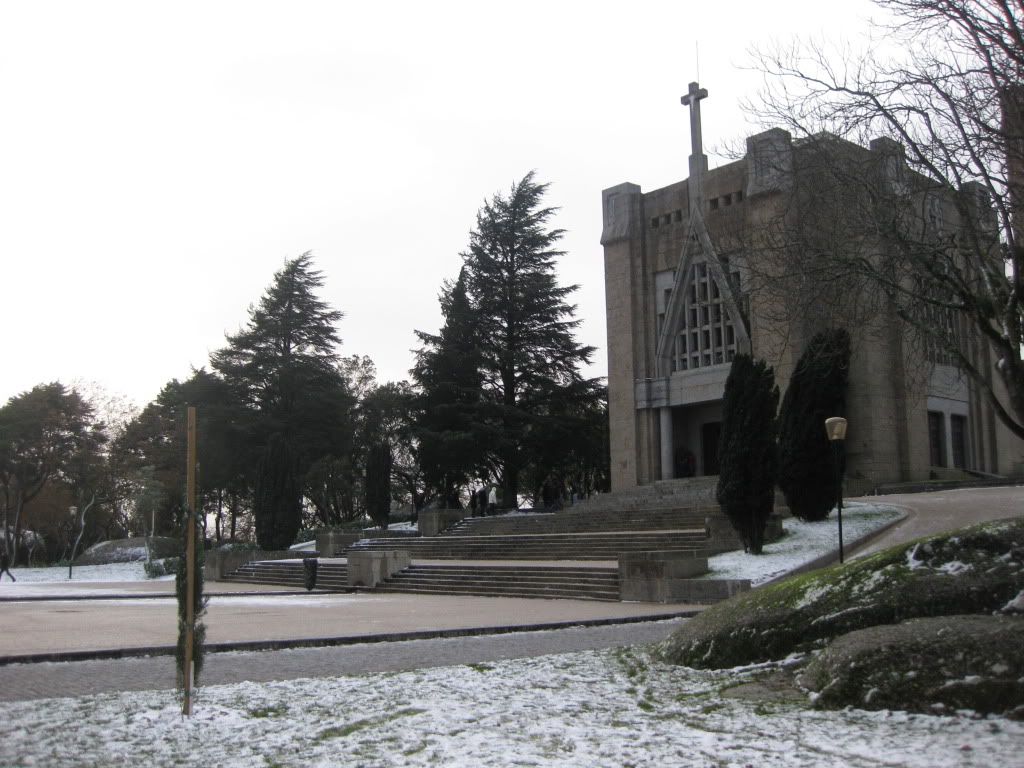
It was far colder than what I was used to!
A small chapel on top of the Monte da Penha, tucked away behind the large boulders that define the mountaintop landscape.
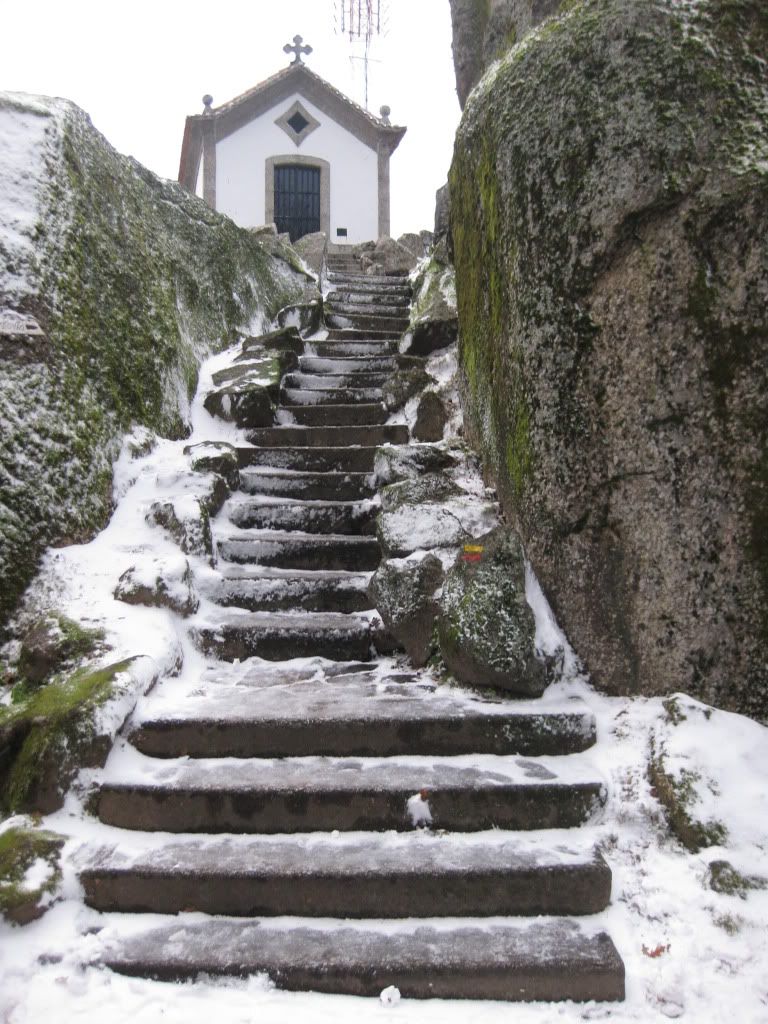
A view of Guimaraes from behind the church at the top of the Monte da Penha.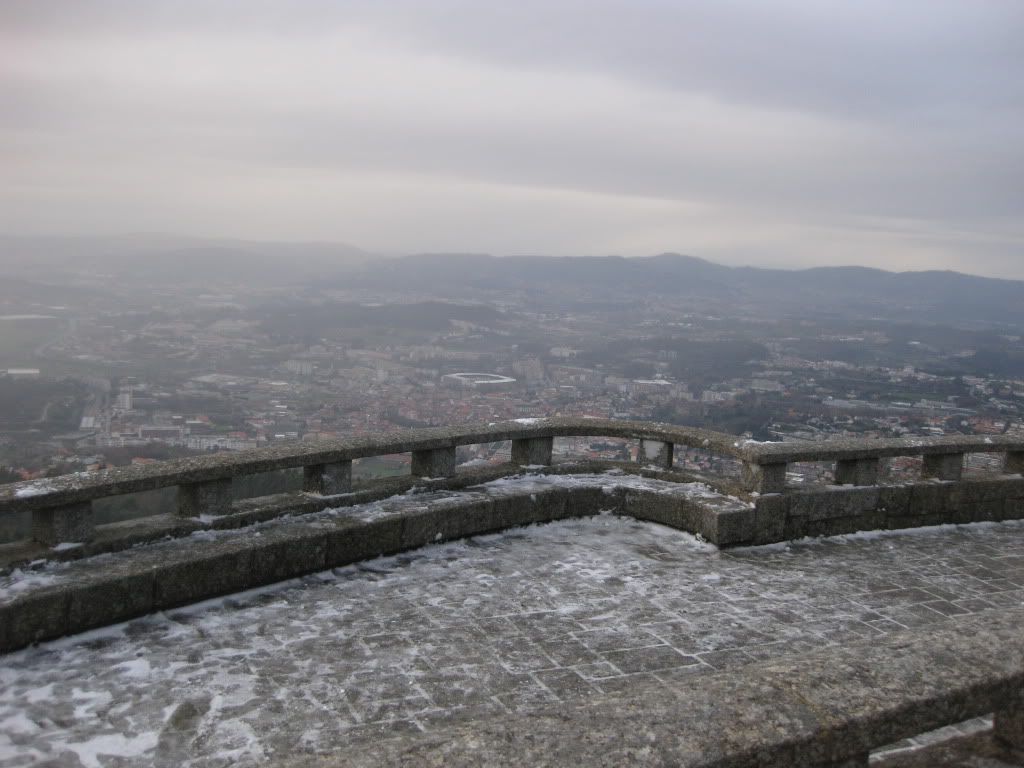
Some of the large boulders that cover the Monte da Penha.
*Info* on the Hotel da Penha:
Has 17 rooms and a restaurant that is famous for its fried fish fillets and amazing views of Guimarães.
Phone number: +351 25 341 4245



